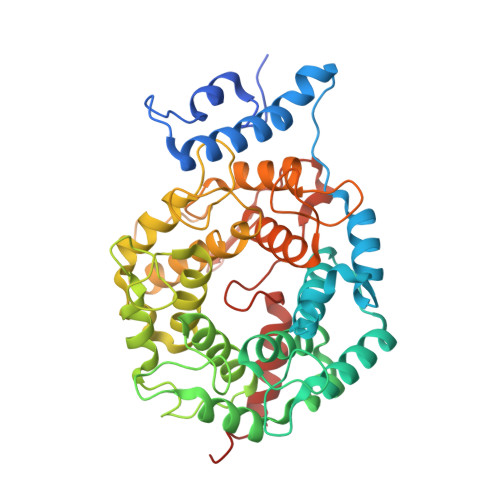Development of Selective, Potent RabGGTase Inhibitors
Stigter, E.A., Guo, Z., Bon, R.S., Wu, Y.W., Choidas, A., Wolf, A., Menninger, S., Waldmann, H., Blankenfeldt, W., Goody, R.S.(2012) J Med Chem 55: 8330-8340
- PubMed: 22963166
- DOI: https://doi.org/10.1021/jm300624s
- Primary Citation of Related Structures:
4GTM, 4GTO, 4GTP, 4GTQ, 4GTR, 4GTS, 4GTT, 4GTV - PubMed Abstract:
Members of the Ras superfamily of small GTPases are frequently mutated in cancer. Therefore, inhibitors have been developed to address the acitivity of these GTPases by inhibiting their prenylating enzymes FTase, GGTase I, and RabGGTase. In contrast to FTase and GGTase I, only a handful of RabGGTase inhibitors have been developed. The most active RabGGTase inhibitor known until recently was an FTase inhibitor which hit RabGGTase as an off-target. We recently reported our efforts to tune the selectivity of these inhibitors toward RabGGTase. Here we describe an extended set of selective inhibitors. The requirements for selective RabGGTase inhibitors are described in detail, guided by multiple crystal structures. In order to relate in vitro and cellular activity, a high-throughput assay system to detect the attachment of [(3)H]geranylgeranyl groups to Rab was used. Selective RabGGTase inhibition allows the establishment of novel drug discovery programs aimed at the development of anticancer therapeutics.
Organizational Affiliation:
Department of Chemical Biology, Max Planck Institute of Molecular Physiology, Otto-Hahn-Strasse 11, 44227 Dortmund, Germany.


















